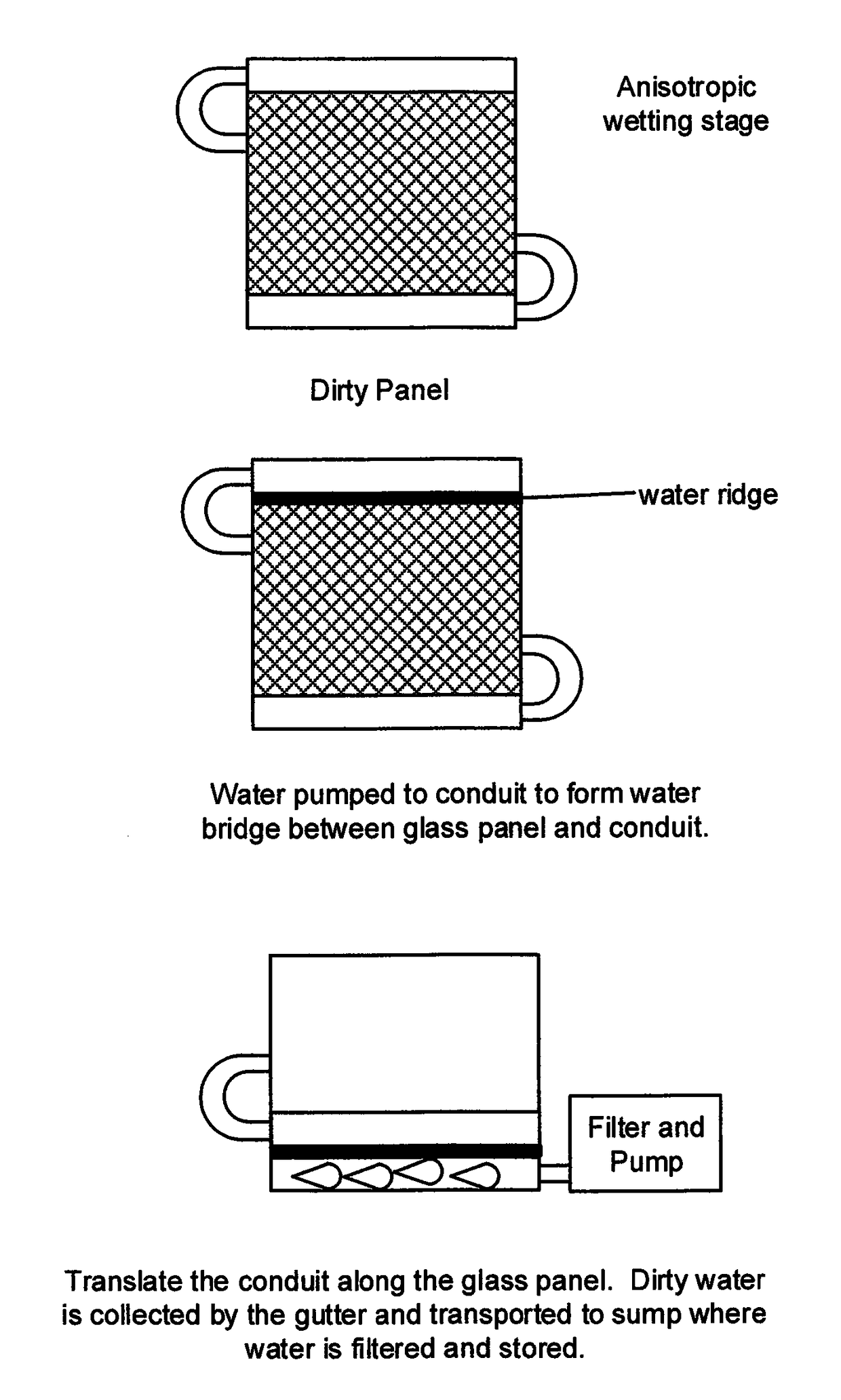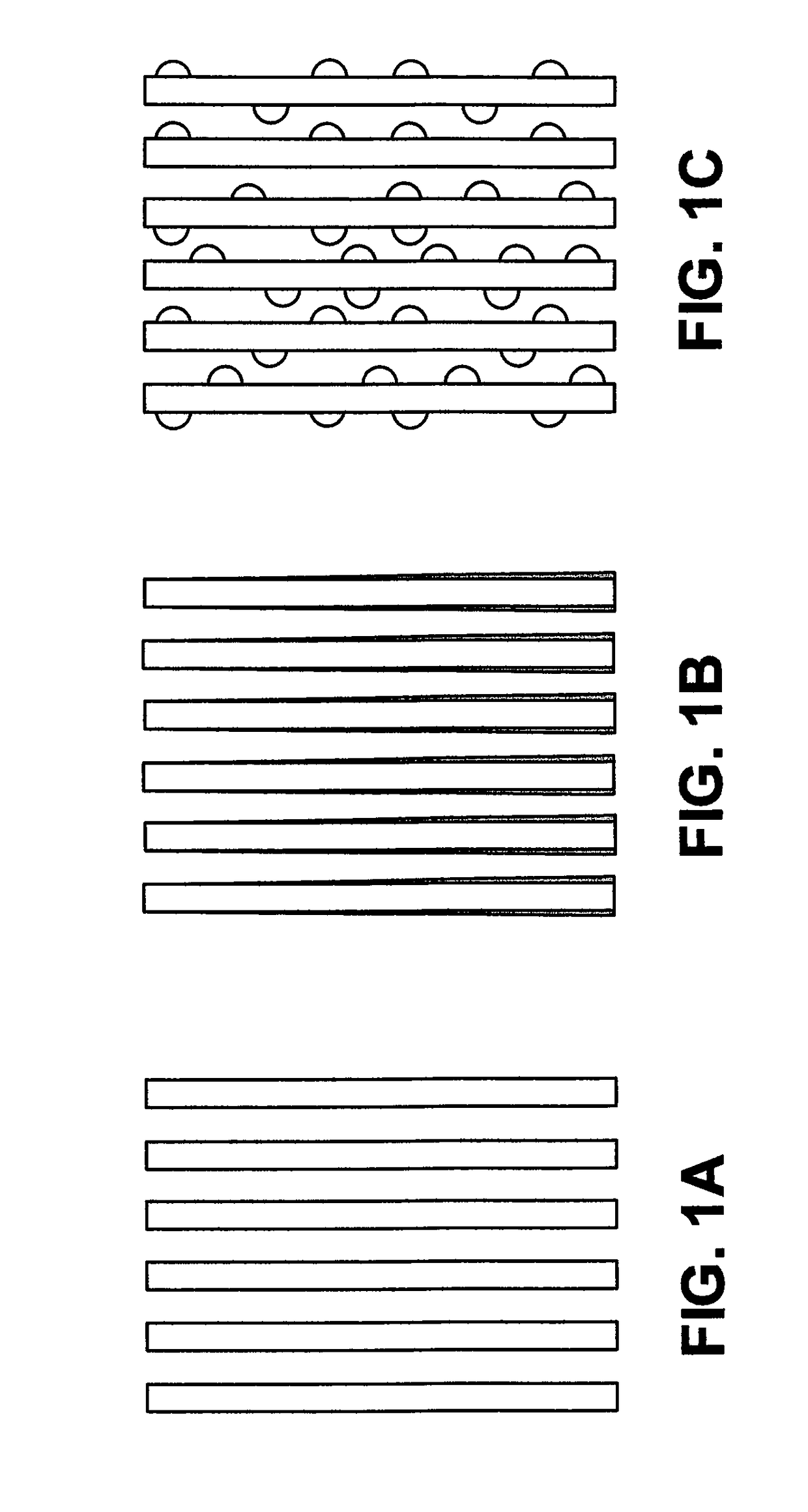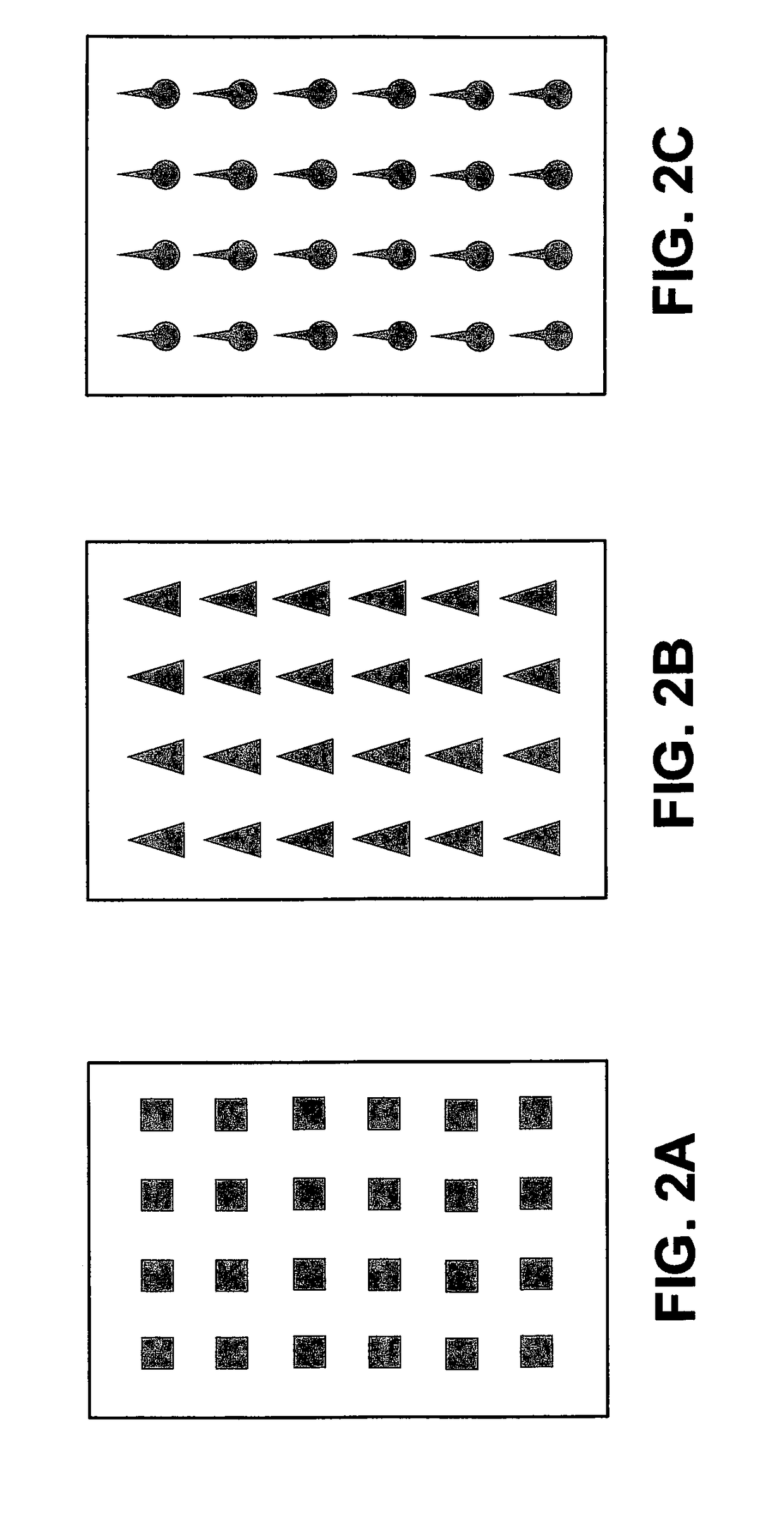Hybrid substrate that facilitates dropwise condensation
a hybrid substrate and condensation technology, applied in the direction of coatings, photovoltaic energy generation, semiconductor devices, etc., can solve the problems of reducing transparency, reducing cooling efficiency, and affecting the performance of solar panels, so as to reduce operating costs, reduce operating costs, and improve cooling efficiency
- Summary
- Abstract
- Description
- Claims
- Application Information
AI Technical Summary
Benefits of technology
Problems solved by technology
Method used
Image
Examples
Embodiment Construction
[0029]A paper entitled “Design and Fabrication of a Hybrid Superhydrophobic-Hydrophilic Surface That Exhibits Stable Dropwise Condensation” (ACS Appl. Mater. Interfaces 2015, 7, 23575-23588) describes a hybrid surface with a superhydrophobic polymer is impaled by a series of sharp protrusions (e.g. needles), while highly effective, is more expensive to fabricate and difficult to incorporate into many designs (e.g. solar cover glass coatings and thin aluminum fin heat-sinks for HVAC). An array of hydrophilic needles, thermally connected to a heat sink, was forced through a robust superhydrophobic polymer film. Condensation occurs preferentially on the needle surface due to differences in wettability and temperature. As the droplet grows, the liquid drop on the needle remains in the Cassie state and does not wet the underlying superhydrophobic surface. The water collection rate on this surface was studied using different surface tilt angles, needle array pitch values and needle height...
PUM
| Property | Measurement | Unit |
|---|---|---|
| contact angle | aaaaa | aaaaa |
| transmittance | aaaaa | aaaaa |
| surface area | aaaaa | aaaaa |
Abstract
Description
Claims
Application Information
 Login to View More
Login to View More - R&D
- Intellectual Property
- Life Sciences
- Materials
- Tech Scout
- Unparalleled Data Quality
- Higher Quality Content
- 60% Fewer Hallucinations
Browse by: Latest US Patents, China's latest patents, Technical Efficacy Thesaurus, Application Domain, Technology Topic, Popular Technical Reports.
© 2025 PatSnap. All rights reserved.Legal|Privacy policy|Modern Slavery Act Transparency Statement|Sitemap|About US| Contact US: help@patsnap.com



